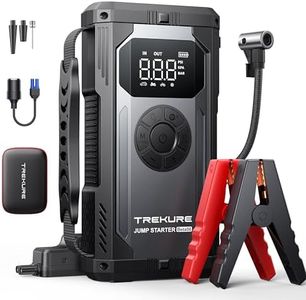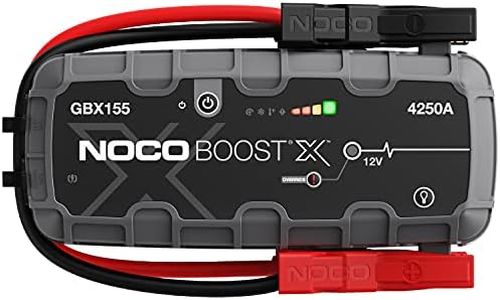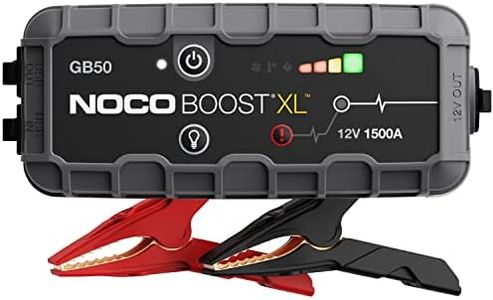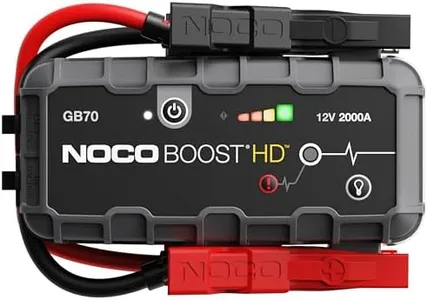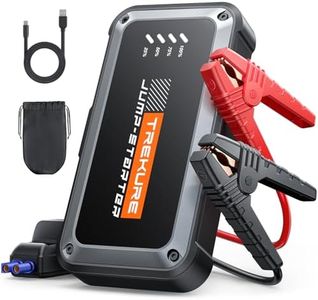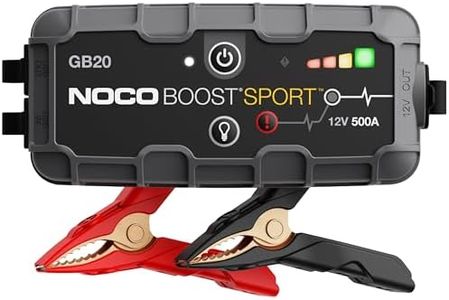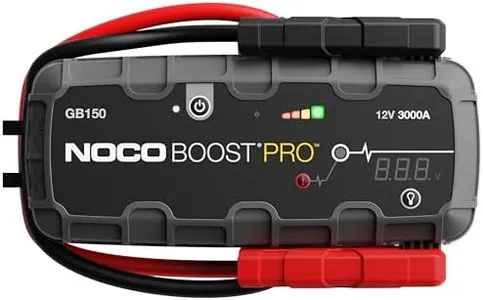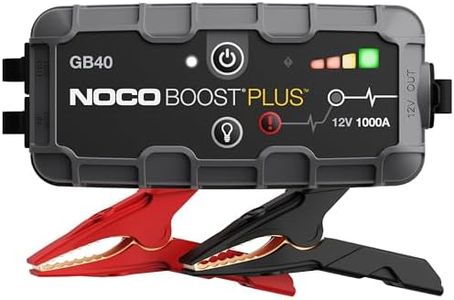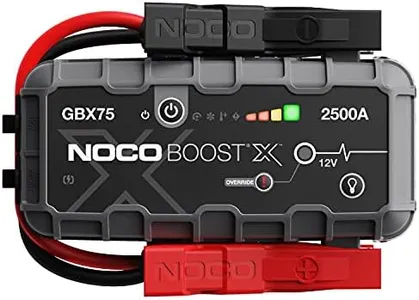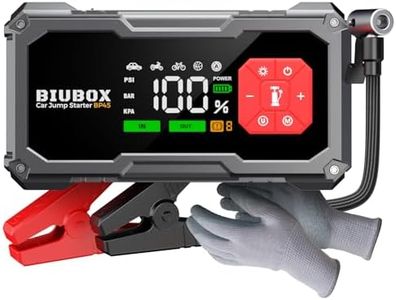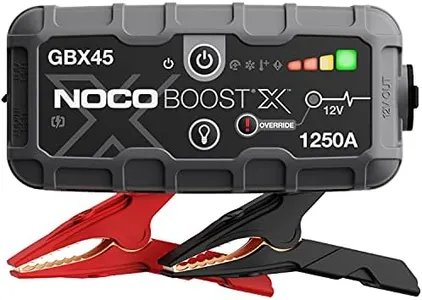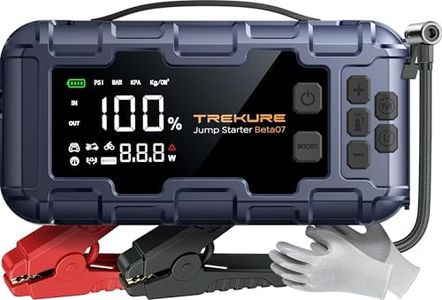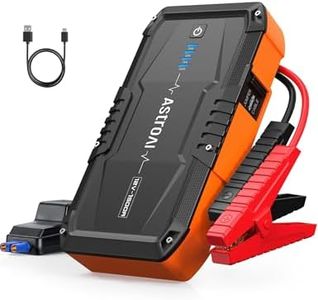We Use CookiesWe use cookies to enhance the security, performance,
functionality and for analytical and promotional activities. By continuing to browse this site you
are agreeing to our privacy policy
10 Best Battery Jump Starters
From leading brands and best sellers available on the web.Buying Guide for the Best Battery Jump Starters
Choosing the right battery jump starter can make dealing with unexpected car battery problems much easier and safer. A good jump starter can quickly get your vehicle running without the need for another vehicle or roadside assistance. When shopping for a battery jump starter, it’s important to match the device's capabilities and features with your specific needs and vehicle type.Peak AmpsPeak amps is the maximum amount of electrical current the jump starter can deliver in a short burst. This is crucial for getting a dead battery started, especially in vehicles with large engines. Jump starters usually range from about 400 to over 2000 peak amps. Smaller cars generally need less peak amps (around 400–600), mid-sized cars and SUVs need a bit more (600–1000), and trucks or diesels may require 1000 amps or higher. You should pick a jump starter that at least meets or slightly exceeds your vehicle’s requirements—check your car’s manual or battery label for guidance.
Battery Capacity (mAh or Wh)Battery capacity tells you how much energy the jump starter can store, typically shown in milliamp hours (mAh) or watt hours (Wh). Greater capacity means more jump starts or the ability to use the unit as a power bank for charging devices. If you only need occasional jump starts, a lower capacity suffices, but if you want to power devices or be prepared for multiple uses (for example, on a road trip or in cold climates), choose a model with higher capacity.
Portability and SizePortability refers to how easy it is to carry and store the jump starter. Some units are compact and lightweight, fitting in a glove box, while others are larger and heavier, often with built-in handles. If space in your vehicle is limited and you don’t want extra bulk, look for a compact model. However, smaller size sometimes means lower power, so balance your need for portability with your vehicle’s requirements.
Safety FeaturesSafety features help protect both the user and the vehicle from accidental damage, such as sparks, reverse polarity, or overcharging. Common safety features include short-circuit protection, reverse polarity alarm, and spark-proof clamps. If you are not confident with car electronics or want extra peace of mind, prioritize a jump starter with robust safety features.
Additional FeaturesMany jump starters come with extras like built-in flashlights, USB charging ports, air compressors, or even emergency signaling features. Decide which of these would be useful for your everyday needs or emergencies. For example, if you often drive at night, a flashlight might be helpful, or if you want to keep devices charged on the go, look for USB ports.
Type (Lithium-ion vs. Lead-acid)Jump starters typically use either lithium-ion or lead-acid batteries. Lithium-ion types are generally lighter, smaller, and hold their charge longer, making them great for most users. Lead-acid jump starters are heavier and bulkier but can provide higher currents, which may be better suited for consistently starting very large engines. Choose lithium-ion for convenience and portability unless you drive a large vehicle or operate in very cold climates.
